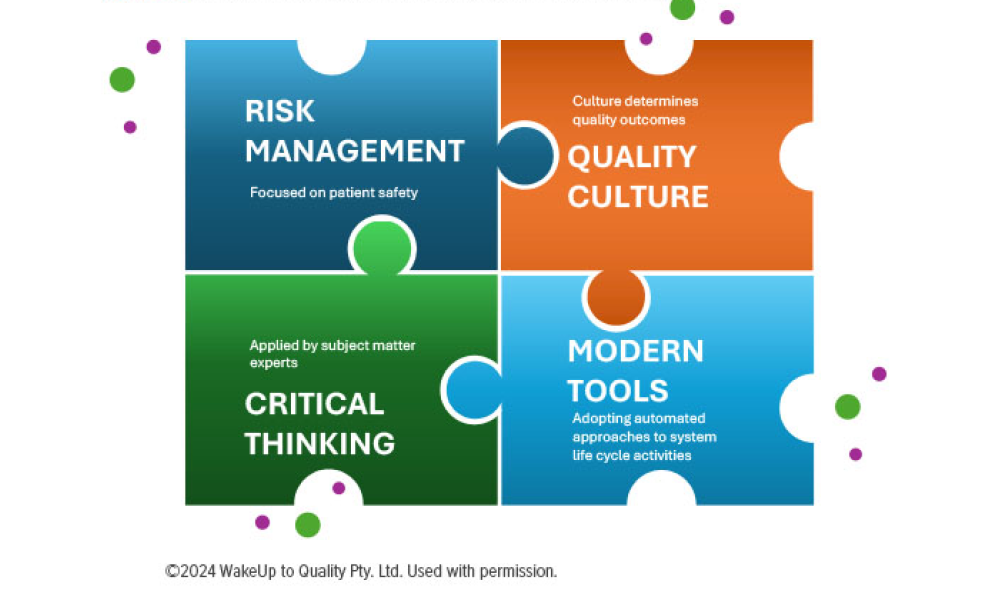To that end, the group recently published two new concept papers authored by a diverse group of subject matter experts in the field. Each paper builds on a concept presented in the ISPE Baseline® Guide Volume 8: Pharma 4.0™ and presents a real-world test case scenario.
“The papers are the result of aligned Pharma 4.0™ architectural and connectivity concepts that were road tested in actual multi-vendor equipment implementations to demonstrate horizontal and vertical integration for plug and produce in the life science industry,” said Pharma 4.0™ Community of Practice Co-Chair Wolfgang Winter, Director at Agilent Technologies Deutschland GmbH. “The ‘road testing’ happened in a combination of ‘Plugfests’ and proof-of-concept, or pilot installation, in collaboration with selected pharmaceutical manufacturing sites.”
IT/OT Architectures for Prescriptive Maintenance
The concept paper Pharma 4.0 – Towards IT/OT Architectures for Prescriptive Maintenance identifies the principles that an architecture should incorporate to move toward plug and produce capability. It is designed to help the reader understand the importance of those principles and apply them in the context of their unique starting position on their journey to realize Pharma 4.0™.
“We are not trying to define a new industry standard in this concept paper—instead, we present concepts that are informed and take in existing, relevant approaches, technologies, and standards where applicable,” said Josef Trapl, co-author of the paper and Managing Director at Memo3 GmbH. “In the paper, the implementation of the predictive maintenance use case at a CMO [contract manufacturing organization], operating a
60 L pilot-scale reactor under GxP, demonstrated the feasibility of using smart sensor data for prescriptive condition-based monitoring of equipment that is outside of the typical system constraints in the old ISA-95 automation pyramid. The paper successfully leverages the NAMUR Open Architecture, but also reveals certain gaps in the existing approach. The team therefore explored the Industry 4.0 concept of modeling and transporting mainte-nance-relevant metadata through the use of the asset administration shell.”
Information Model Concept on OPC UA for Alarms and Audit Trails
Plug and play in general describes a piece of equipment that is ready to use upon connecting to a computer without any configuration, like a home printer. Plug and produce has the same vision for manufacturing and aims to enable straightforward integration of new production equipment or a device to substitute or adapt assembly line parts.
Concepts like OPC Unified Architecture (UA) and Modular Type Package (MTP) are the groundwork for the standardization of interfaces and data formats for shop floor manufacturing equipment to enable plug and produce. However, current standards focus either on technical integration concepts or information structures.
Technical integration, information structure, and biopharmaceutical-specific elements and documentation need to be in place to fully realize plug and produce. The concept paper Process Events for the Life Science Industry–Information Model Concept on OPC UA for Alarms and Audit Trails proves that a standard model within OPC UA Alarms and Conditions (OPC UA Part 9) can be leveraged to realize plug and produce for exchanging pharmaceutical alarms and audit trails between OT manufacturing equipment and orchestration platforms or IT services like electronic batch record or historian.
“We are extremely excited to see this work come to fruition and are extremely proud of the team’s accomplishments to make this happen,” said Winter. “With these released, we are ready to tackle the next Plug and Produce concepts and POCs on our roadmap.”
Other concept papers from the ISPE Pharma 4.0™ Plug and Produce Working Group include Connectivity between Shopfloor & Manufacturing Operations Management Systems with OPC UA – A Tangible Step Toward Plug & Produce and A Simplified Integration of Qualified Laboratory Devices with the Asset Administration Shell as the Digital Twin.
Download Now
Access to concept and discussion papers is an ISPE member benefit.




